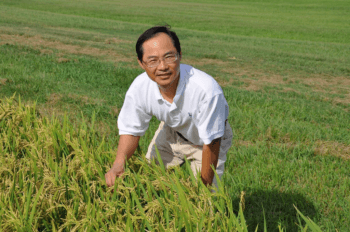Helping U. S. Farmers Meet Organic Rice Demand
Organic rice is increasingly desired by U.S. consumers, but farmers know that growing the grain chemically free can mean providing a feast for insects, diseases and weeds.

Organic rice is increasingly desired by U.S. consumers, but farmers know that growing the grain chemically free can mean providing a feast for insects, diseases and weeds.
That’s why the U.S. Department of Agriculture has put $1 million on a multi-state team of scientists with a track record of battling pests toward the goal of making organic rice profitable for farmers and more available for consumers. The grant also establishes the first Center of Excellence for organic rice research in the U.S.
“Organic rice is important to the U.S., and most of the organic rice acreage is located in the southern growing region and California,” said Dr. Xin-Gen “Shane” Zhou, Texas A&M AgriLife Research plant pathologist in Beaumont and project leader. “Organic rice acreage has increased to about 50,000 acres in the nation. In contrast, conventional rice acreage is on the decline.
“The organic market is growing, but U.S. farmers have not been able to keep up with the demand domestically.”
While the price farmers receive for organic rice is nearly double what they get for conventionally grown rice, Zhou said, producing an adequate yield of quality rice organically is challenging.
“Very little research has been done on organic rice, and organic studies on other crops do not apply to rice because – unlike other crops – most of it is grown in flooded fields,” he said. “That subjects rice to a different spectrum of disease, weeds and insect pests than dryland or irrigated crops.”
Informal surveys to identify the issues affecting organic rice production were conducted in California, South Carolina, Louisiana, Arkansas and Texas, he said, along with field days, workshops and meetings with farmers, millers and end-users. This helped the scientists identify nutrient management, pest control and rice varieties as the main needs to make organic rice production economically viable.
Continue reading on Agrilife Today.
